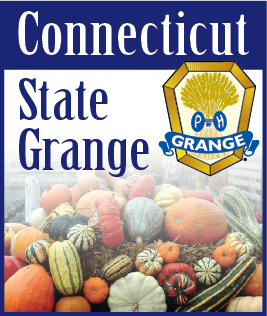| February 1, 2023 -- Do you know the strengths and weaknesses of your Grange, both internally and externally? A SWOT analysis can help you find the answers.
What is a SWOT Analysis? Businesses and organizations regularly analyze their processes to ensure they are operating as efficiently as possible. One of the most effective methods to achieve this is to con- duct a SWOT analysis. SWOT is an acronym for “Strengths, Weakness- es, Opportunities, and Threats.”
This method was created in the 1960s by Albert Humphrey of the Stanford Research Institute, during a study conducted to identify why corporate planning consistently failed. Since its creation, SWOT has become one of the most useful tools that helps businesses and organizations identify where they’re doing well and where they can improve, both from an internal and an external perspective. SWOT works because it helps you evaluate your business/organization by considering multiple factors:
1 Strengths and weaknesses are internal factors (things you can control), like members, assets, qualities and even geographic location.
2 Opportunities and threats represent external factors (things you can’t control), such as competitors, regulations, and economic trends.
The analysis can show you the key areas where your organization is performing optimally, as well as which operations need adjustment.
It’s beneficial to perform a SWOT analysis on your Grange to check on the current landscape of your operations, so your Grange can improve as needed. This is an activity that should be conducted at a meeting where your members can participate. The Grange leaders should provide a broad view of your Grange and offer insights accordingly, but the members should be encouraged to participate when developing the specifics as their view- points are valuable. The more diverse the group, the better insights you’ll generate. This can even be done anonymously by having four jars - one for each of the sections, and have members write out their viewpoints and place them in the appropriate jar. Then the contents are read and evaluated as a group. (See the accompanying chart as an example.)
The analysis is complete. Now what?
Congratulations! Hopefully, you understand your Grange a little better after completing your SWOT
analysis; now it’s time to put those insights to good use. Your ideas on how to use your strengths and overcome your weaknesses define objectives for your Grange to move forward, thus creating priorities, initiatives and projects to help make them a reality, and identifying measures to make sure these goals are unfolding the way they should.
Taking the time to look at your Grange from different perspectives and honestly assess your future prospects is a worthwhile activity; the insights you glean as a result should then be used constructively as part of the Grange’s future planning.
Need some assistance? Drop us a line. We’re here to help! E-mail: publicrelations@ctstategrange.org or information@ctstategrange.org.
|
